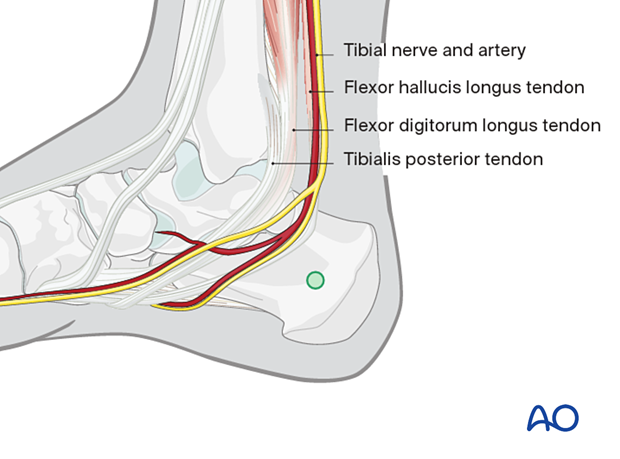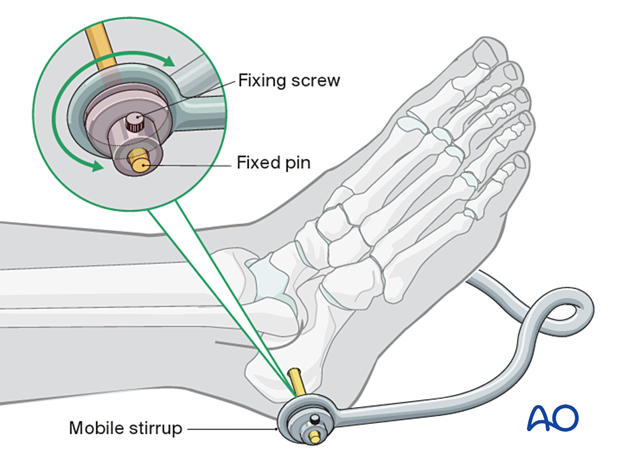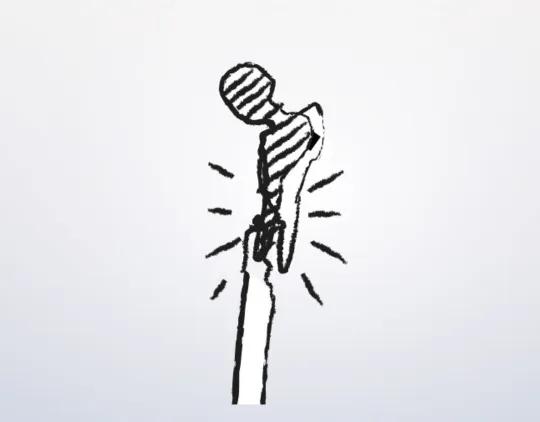Traction
1. Calcaneal pin traction
Application of calcaneal pin traction
If an external fixator is not available, open fractures, especially if they need repeated wound care, can be treated in the short term with calcaneal pin traction on a Braun frame.
Skeletal traction on a Braun frame is also valuable for maintaining the length of unstable multifragmentary closed tibial and distal femoral fractures (those for which stability cannot be restored with realignment alone). Skeletal traction is occasionally an option for patients who are not fit enough for operative intervention.
Calcaneal pin insertion
The pin is inserted under local anesthetic (eg, 2% lidocaine, 5 ml on each side of the calcaneus) 2 cm above and 2 cm distal to the calcaneal tuberosity.

The pin selected should have a diameter of 5 mm with a cancellous type pitch. This is critical to avoid the aberrant motion of the pin into the cancellous bone of the calcaneus. It is important that the stirrup is able to rotate around the Steinman pin to prevent rotation of the pin in the bone.
Rotating pins loosen quickly. Loose pins significantly increase the risk of pin tract infection.

Positioning in Braun frame with 3-4 kg traction
The Braun frame supports the thigh and the proximal tibial segment. Pressure against the thigh provides counter traction. The traction force and frame with fabric supports maintain fracture alignment.
The non-elastic supports on the Braun frame are arranged to leave a gap, which allows wound care without changing the leg position.
No more than 4 kg of traction should be utilized to avoid neurologic injury and pin complications.














